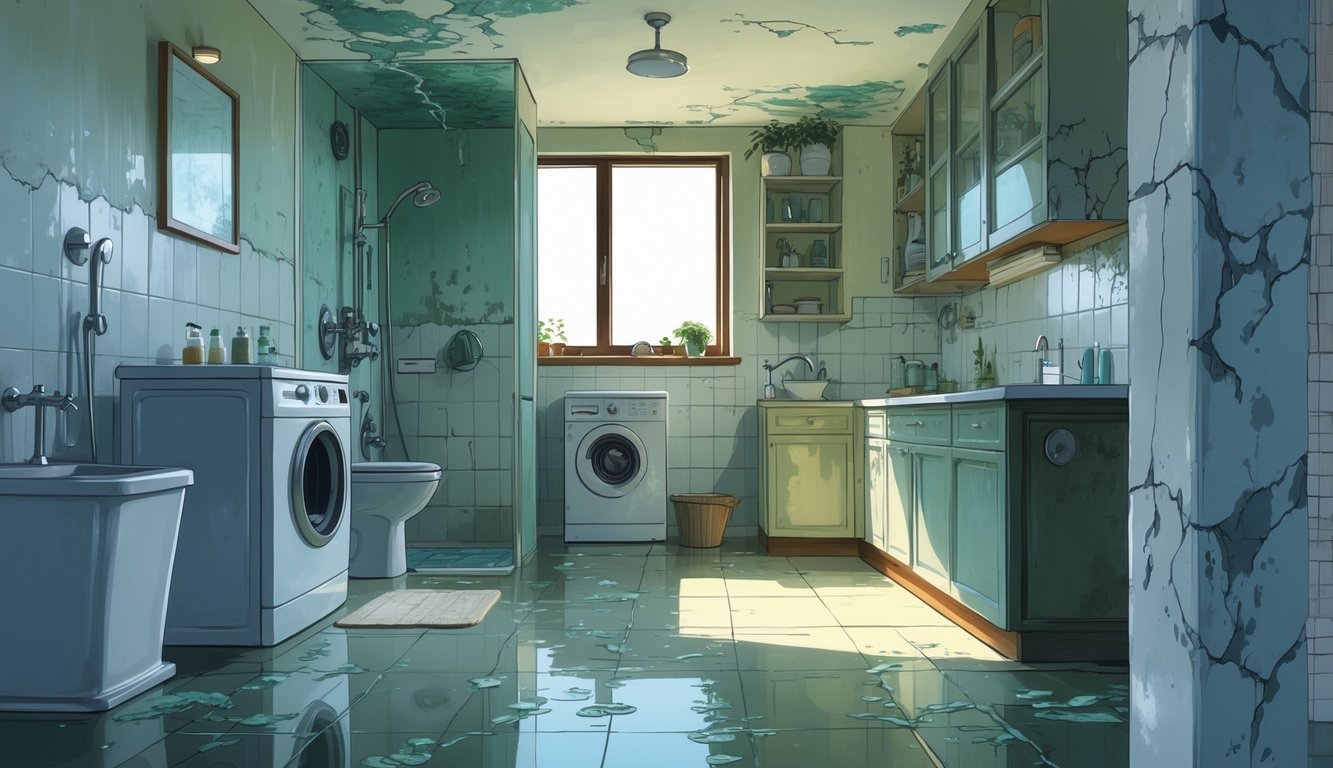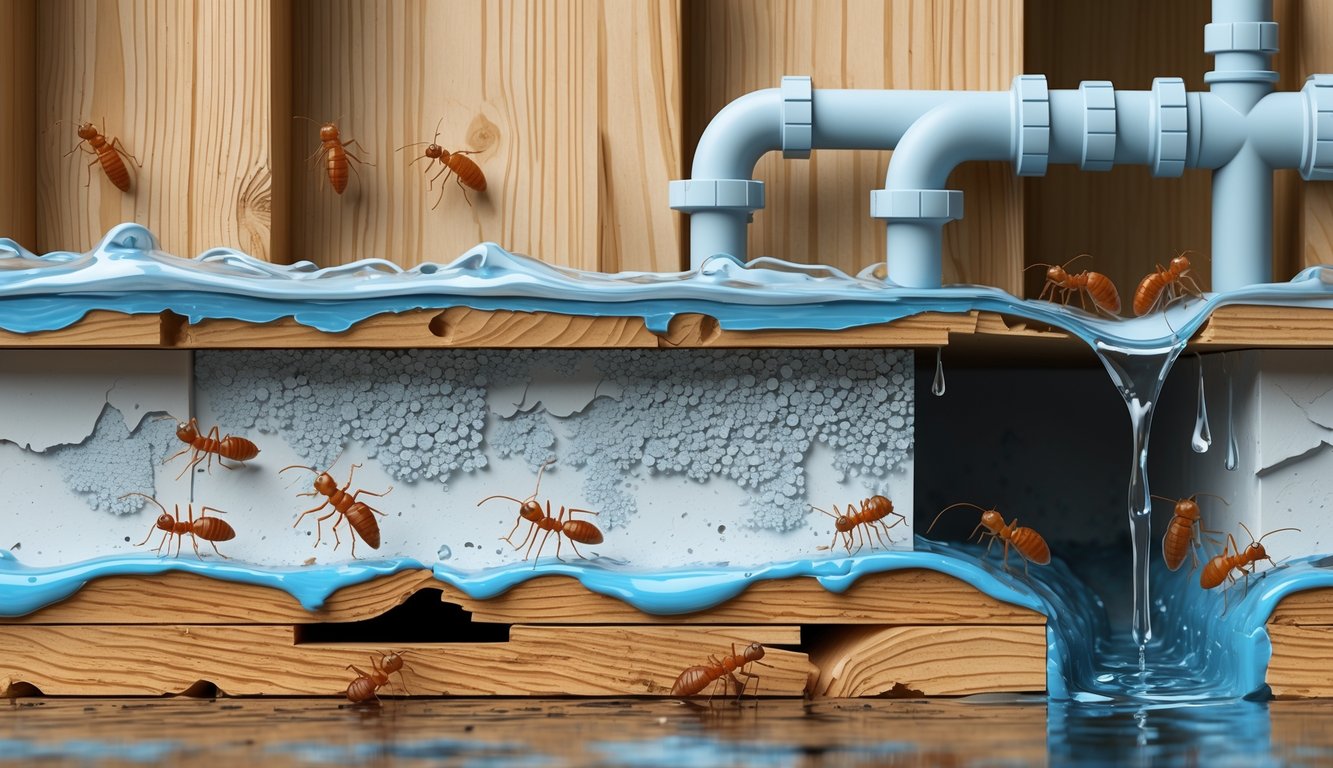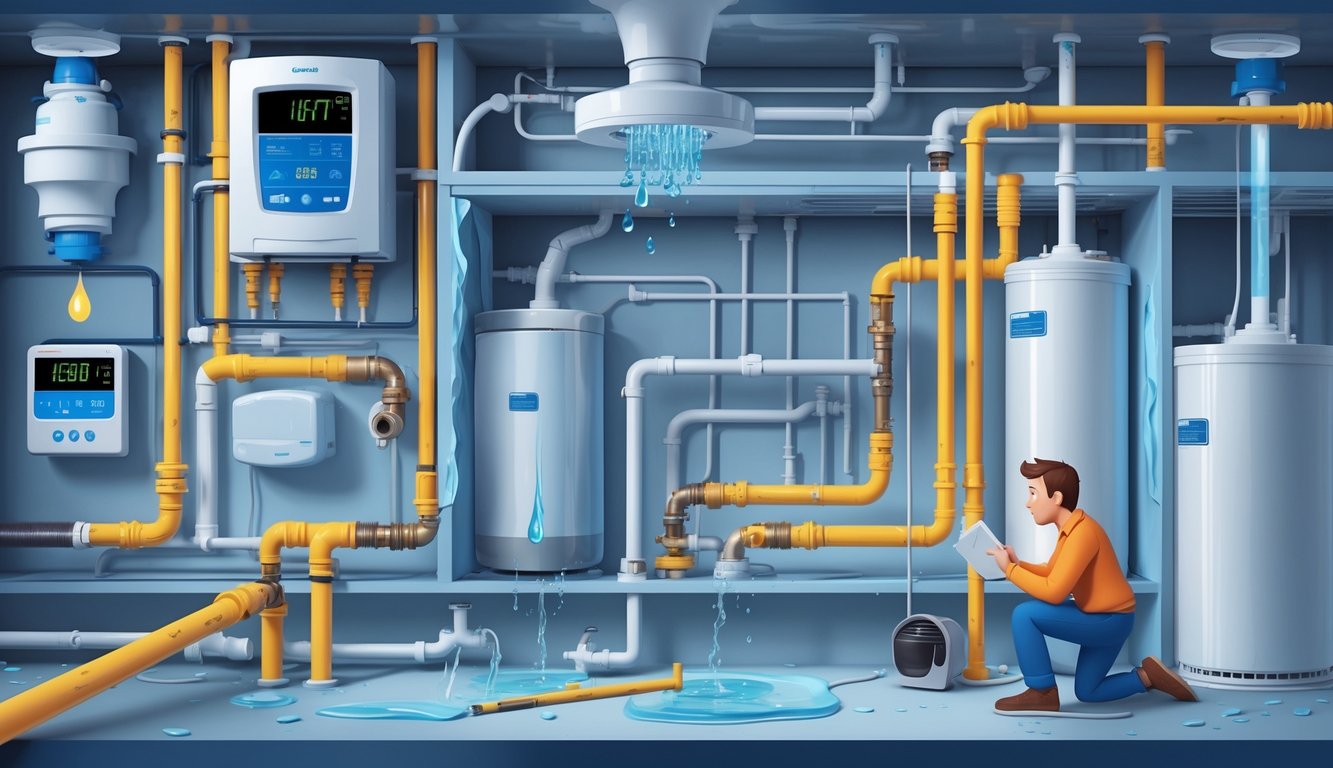
Mold Growth and Insulation Issues
I pulled insulation from behind my bathroom wall once—looked like a science experiment gone wrong. Mold everywhere. Sometimes the pipes “sweat” extra because of mineral deposits, which nobody warns about when you buy the place. Who expects attic insulation to get soggy from a tiny drip?
Crawlspaces and attics get gross: even a little hard water (like, 3.5–7.0 gpg per the EPA) can do it. Mold grows fast, and pros say you smell it before you see it. I’ve seen those photos of ruined insulation—honestly, it’s gross.
Had an energy auditor tell me my wall insulation was soaked because of pipe sweat. HVAC guys say it’s normal in hard water areas. Insulation loses R-value, the air gets weird, and there’s no magic product to fix it—ads lie. Only way is to dig out the buildup and hope for the best.
Roof Leaks and Structural Integrity
People roll their eyes when I blame roof leaks on hard water, but I swear, mineral-laced drips crawl everywhere. I’ve seen scale creep up copper lines and rot out flashing. GAF’s tech director once said even a tiny mineral drip wears out caulking way faster than normal.
Claims adjusters point out hard water weakens roof seals, making leaks more likely after scale reroutes water under shingles. And then the insulation’s toast, the joists sag, and the repair quote makes me want to move. Hidden home damage? Yeah, it’s real.
Wood framing? Doesn’t warp overnight. It just slowly sags, and nobody blames hard water until it’s too late. Watching for water spots is useless—mineral water sneaks in, rots stuff, and leaves no evidence until you’re broke.
Hard Water’s Connection to Pests and Termites

Every weird smell under the bathroom sink reminds me: hard water makes life too easy for pests. Moisture sneaks behind walls, stains show up, and suddenly half your house is a bug hotel. All because of boring minerals in the tap.
Creating Moist Environments for Pests
It’s almost funny—hard water leaves chalky rings everywhere, but the real problem is the bugs. Limescale clogs pipes, moisture lingers, and then you get roaches (the kind you never mention to guests) scuttling out from under the fridge. EPA says just 40% humidity is enough for infestations if water hangs around.
More minerals, more leaks, more bugs. I asked a pest guy—he said slow leaks are a buffet for ants, silverfish, earwigs, even spiders. Realtors never mention that. Add a softener and you’re still scrubbing white rings, wondering why your pantry’s full of uninvited guests. Pests don’t need much—just a little drip under the sink or a damp baseboard.
Water Damage Attracting Termites
But honestly, termites are worse. They don’t knock, but the minute hard water leaks behind a wall, the soggy wood calls to them. I read a guide about termite vs. water damage and now I’m paranoid. Once wood rots, termites show up faster than my dog when I drop food.
Picture this: water stains the subfloor, humidity stays high, and by the time you see termite tunnels, you’re already in trouble. Experts say even a little dampness speeds up termite infestations. It’s ridiculous that a tiny drip costs more in termite treatments than fixing the leak. But it does, especially in rainy places. All thanks to invisible mineral deposits and pinhole leaks. Termites don’t do dry.
Meanwhile, your neighbor borrows your shop-vac, and somewhere under their porch, termites are feasting because of neglected mineral buildup. Insurance never covers that.
Maintenance Costs and Energy Concerns

Nothing ruins a weekend like surprise repair bills—pipes clatter at midnight, the dishwasher moans, and every showerhead spits sideways. I put off maintenance, and suddenly everything’s broken. My water heater sounds like it’s eating rocks.
Increased Maintenance and Repair Expenses
I’ve lost count of how many times I ignored those weird white rings on faucets, until someone with a wrench explained it was calcium. Cool, thanks. Over 85% of U.S. homes deal with hard water, which makes me feel only slightly less cursed. It’s not just the obvious stuff—shower cartridges, washing machine hoses, fridge filters, toilet valves, and those tiny parts nobody warns you about until they break.
A plumber once pointed at my water heater’s drip tray and said, “Scale means this tank’s probably not lasting ten years.” Turns out 75% of heaters die by year twelve, mostly from scale and corrosion, directly from hard water. I’ve tried the tablets, vinegar, all of it—nothing lasts. My repair bills are just a scrapbook of mistakes and delayed chores. All because I thought the problem was just cosmetic.
Rising Energy Bills from Efficiency Loss
You know what’s wild? Every month, I stare at the utility bill like it’s some kind of cryptic message. Did I leave the oven on all night, or is my water heater just running its own spa day? Hard water’s the sneaky villain here—gets into heating elements, leaves behind this crusty, chalky gunk that’s apparently an expert at blocking heat. So then my water heater, dishwasher, and washing machine start guzzling more electricity or gas, but the results? Meh. Sometimes worse.
Industry folks and those energy efficiency “specialists” (whoever they are) keep saying heating costs jump when limescale piles up on the coil. Here’s a link if you want to fact-check me. It’s like boiling water with rocks on the lid. My bills didn’t double, but they’re definitely sneaking up—like, 15–30% more power for heaters, at least. If you remember to flush your tank twice a year, check the anode rod, descale stuff—yeah, it helps. But skip it and you’re basically just burning cash. If you actually want to save money, just get a water softener before your appliances start plotting a mutiny.